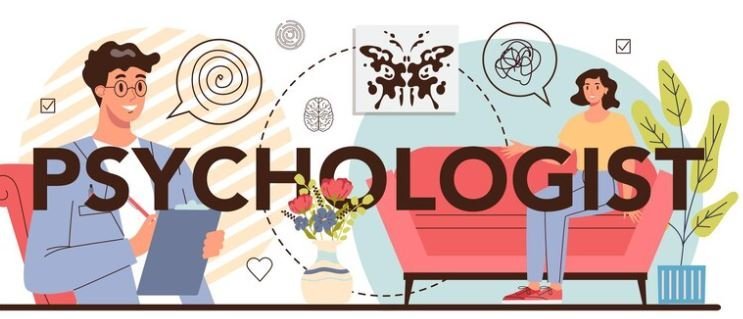Types of Curriculum When we mention Types, it refers to how organized and delivered the planned curriculum is used to the curriculums learn various subjects, skills, and values. The, re are many types of curricula, and every individual curriculum has its way of teaching or teaching. learning will be of teaching-learning different sorts of curricula and why they are important to teach students.
Core Curriculum, or What Everybody Knows
The Core Curriculum is the range of curriculum subjects that (in a few countries) must be taught or simply a list of compulsory core subjects for students. These subjects typically include math, science, language arts (i.e. reading and writing), and social studies (like history or geography). The core curriculum is carefully crafted to guarantee that all students will be fluent in these essentials.
Why is it Important?
It guarantees that every student learns at least a minimum of the two or three most essential subjects. Promotes cognitive learning in the students. Sets up the student for what is to come in school and college.
For example, picture yourself in math class learning fractions. In a core curriculum, any student in your grade who goes to another school will be studying fractions. Thus everyone’s information.
Curriculum Integration: Bridging the Gap
The Integrated Curriculum integrates various subjects and teaches them together. Teachers don’t instruct reading, math, and science as individual subjects but blend the three into one big lesson. This model also encourages the students to consider how subjects are interconnected.
Why is it Important?
To show how subjects are interconnected and applicable to the real world. Challenges students to think and respond critically. By applying it in live situations.
For example, let’s say you decided to study weather. For example, in an integrated curriculum, you might learn about the science of weather or study storms for ELA as well and take math to look at temperatures.

The Unwritten Curriculum: Learn without learning
The Hidden Curriculum is not something you read in textbooks or a sheet of lessons. They are the lessons students learn indirectly through the school environment, rules, and culture. These lessons range from behavior to attitude down to the social norm.
Why is it Important?
Influences how students relate to others and take meaning from their experience of the world. Imparts valuable life skills, including respect, responsibility, and teamwork to students. Provides an understanding of ethics
Example: Discipline for Time is when a school has strict time rules where the students will know what it means to be on time. Even though it is not a subject like math and science, this lesson was learned through a hidden curriculum.
The Spiral Curriculum: Adding to Knowledge
A Spiral Curriculum: where students see the same things repeatedly, each time they learn more detail and also take it to a new level. This promotes the reiteration and therefore, adds to the foundation material that they have already learned.
Why is it Important?
Tests are repeated to improve recall when students read something several times. Enables students to slowly depend on difficulties. Promotes ongoing learning and evolution
For example, you may learn about plants in science in 1st grade and then again in 3rd grade but with more specifics on how plants grow food for themselves. In 5th grade, you should be focusing more on plant biology and the environment.
The explicit curriculum: that which is considered by cathedrals to be the “officially largest function” of any organization or community.
The Explicit Curriculum — what teachers plan and teach directly. It comprises the subjects and lessons that are already mentioned in the curriculum guide released by the school. This is the curriculum people are generally thinking of when they think about what schools teach.

Why is it Important?
Helps to direct student learning towards more specific knowledge and skills essential for their education Serves as a ROAD MAP of what students need to learn each year. Assists educators in preparing their lessons and monitoring the academic performance of students.
If your teacher says, “Today we’re going to do the water cycle,” and then teaches you about evaporation, condensation, and precipitation, that’s a manifestation of the licit curriculum.
Second in the Series: The Implicit Curriculum
The Implicit Curriculum is a lot like the hidden curriculum, but it also deals with all of those unsaid or unofficial lessons that students gather just by being at school. For example, learning to ask for help when needed or how a classroom works (rules and expected behavior), interpreting social cues from teachers/tutors/other students.
Why is it Important?
Educates students on what is appropriate in regular school life. Aids students in understanding how different it is to be at a school and what kind of behavior people are expecting. Invests in the holistic character and value formation of students.
Example: An implicit curriculum for teaching students about the value of perseverance is when a teacher continually praises hard work and never gives up.
The Out-Of-School Curriculum: Lessons From Beyond The Classroom
Extra: Extra-curricular curriculum refers to activities students get up to outside of the classroom. The hobbies can be sports, clubs, music, or art. These are not part of everyday schooling, but they form significant points in a child’s education.
Why is it Important?
Assists with developing the talents and interests which are not given in regular classes. These include things like teamwork, leadership, and time management. Facilitates socialization and interaction with other dog owners.
If you sing in the school choir or play for your soccer team, those are examples of how you engage with an extra-curricular curriculum. These activities help you in learning something new while having fun at the same time.
The null curriculum: what is missing
Henry Giroux: The Null Curriculum – What we Aren’t Being Taught in School At other times that topic might not be a part of the syllabus for lack of time, resources or as it is considered unimportant by the school in which case the teacher should come prepared and teach such topics to their students.
Why is it Important?
Educates about the missing gaps that may need to be refilled in education. Limits of what can be taught in schools. To encourage educators to think about what else could be included to provide students more rounded education
If a school doesn’t teach about things like financial literacy (how to manage money or save for the future), that would be part of the null curriculum. This is why practice with life skills is important and should be done outside of school if students need to learn them.
In Summary: The Significance of Understanding Types of Curriculum
This kind of curriculum enables us to see that education is more than what occurs in the classroom. Every form of curriculum has a purpose in what it offers students to study and potentially learn while en route.
Having students know what curriculum they are being taught can give you a better understanding of your education. You can be grateful for not only your math or science lesson but also how you evolved into a more authentic being with the lessons in disguise, after-school activities, and even what they omitted from your curriculum.
College is an experience, and the coursework leads you through it. You can by experiencing various curriculums and knowing what is your way of learning to reach a position where you know at some point in time, you feel like higher school success inside as well outside the classroom!


